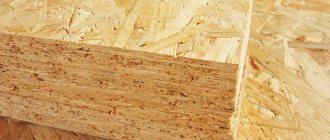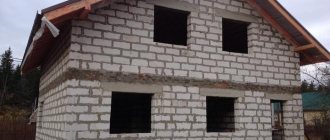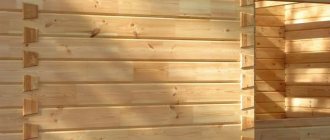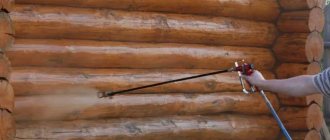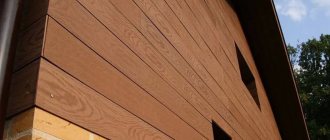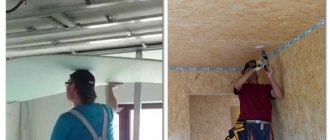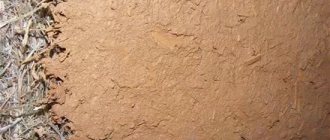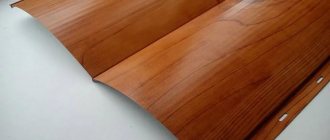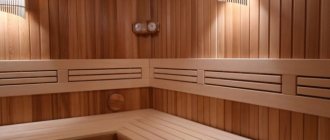The interior decoration of a country house is carried out after completion of all construction, roofing and insulation work. The question of choosing a method for decorating a country house is not as clear-cut as it seems at first glance. It is not always possible to use traditional finishing options. If the dacha is not heated and is used by the owners as a seasonal temporary shelter, then many finishing materials will not withstand seasonal fluctuations in temperature and humidity and will become unusable.
At the same time, even in such unheated rooms, the owners want to achieve maximum resemblance to urban everyday comfort. For these reasons, a certain style of design of country houses has developed, due to the use of moisture-resistant and frost-resistant materials for finishing.
Traditional wood dacha decoration
If the country house is located in a humid climatic zone (river bank, lake), then even the presence of constant heating will not solve the problem of deterioration of hydrophobic finishing materials from moisture.
Preferred finishes
Lime-cement plaster
A fairly affordable, economical option for “stone” buildings would be lighthouse plaster with lime-cement mortar.
Such rough finishing has proven itself well in both heated and non-residential premises and, most importantly, its reliability has really been tested for decades. As for the application technology, it is simple.
The first thing you need to do is prepare the surface: remove any build-up of solution that interferes with work, sweep away dust and dirt.
Then, using a long level, check the geometry of the wall and determine what layer will be needed to level it.
Then everything is as usual. I drilled dowels in the four corners and placed one of the pairs strictly at a vertical level, and then pulled the lacing along the diagonals of the resulting quadrangle.
By adjusting the immersion depth of the pair opposite from the exposed dowels with a screwdriver, you can build a beautiful vertical plane. All that remains is to place the beacons under the already stretched threads and glue them to plaster glue.
Difficult, right? Modern technologies have made life much easier for builders. Now, instead of a bunch of these nails and lacing, you can take just one laser plane builder and use its beam to set up lighthouse slats. You will save a carload of time, and the result will be much more accurate.
All that remains is a simple but dirty job - throwing plaster on the wall and tightening it with a rule. Here you just need to remember to moisten the bricks with water, and remember that the task of the plaster is to create a working surface, and preparing it for finishing is the job of the putty.
By the way, it can also be done with a regular gypsum mixture such as Knauf multifinish; after good priming, it is unlikely to be more afraid of moisture than any natural stone.
But you need to take high-quality paint, preferably silicone or silicate based, such condensation is not dangerous.
Tree
And yet, wood should be considered the ideal finishing material for an unheated (and even heated) dacha. He doesn’t even care about the steam room, let alone fine dew. The main thing here is not to forget about ventilation, because mold can grow even on rocks.
The most popular wood cladding today is:
- eurolining;
- imitation timber;
- block house.
The first one is the easiest to work with, but the quality of such material is quite mediocre, but the side-house is extremely difficult to process, all it takes is to perfectly fit the corner joints, but as a result you can get such interesting interiors:
But don't be upset. If you don’t have the money to hire expensive cabinetmakers, and the lining does not suit your status, you can always find a reasonable alternative. This is what imitation timber is today.
Look at the following photos:
In my opinion, it’s a completely worthy replacement for a block house, but installation is no more difficult than the already mentioned lining. The only difference you can feel is when finishing the ceiling. Still, the average thickness of the imitation is 20–35 mm, and the width is 150–190 mm. And this is 2-3 times heavier, which means the likelihood that it will fall off is much higher.
Using a clamp in such conditions is a dubious idea, and turning it with self-tapping screws directly through the body is not very beautiful. So the craftsmen come out of the woodwork, dividing the imitation into one and a half to two meter fragments and nailing it only at the ends, which could then be hidden either under a baguette or under a false beam.
Most often, “paintings” are produced in the spirit of the good old Provence, although it is possible to recreate a Scandinavian design or the eco-style that is super popular today.
As you can see, even if the house does not have regular heating, and you simply cannot afford most modern materials, options can always be found, you just need to look at your favorite website about the dacha. And we always have a lot of interesting ideas for you.
Ceramic tile
This material is usually used for finishing floor surfaces in bathrooms and hallways. Quite often, tiles are also used for residential premises. On the market you can find a version of ceramic tiles made to look like wood. When choosing this finishing option, the floor is as durable as possible.
If you lay a heated floor system under such tiles, you will get a fairly practical coating. Outwardly, it will resemble a parquet board. In terms of strength and durability, such a floor is not inferior to high-quality wood.
How to decorate the walls at the dacha
Walls of the house.
Internal rough finishing of the walls of a house. External finishing of a country house. The exterior decoration of a country house performs two functions at once - decorative and protective, so it is recommended to take this stage of repairing a country house responsibly. It is necessary to begin rough finishing work only after the shrinkage of the house is completed, that is, a year after construction.
The foundation of a country house and the ground floor can be finished with various materials. For example, natural stone, a completely natural material, harmonizes perfectly with wood and allows you to decorate your home in the same style. In addition to its decorative functions, natural stone is characterized by increased strength and perfectly protects the foundation of the entire building.
How to decorate the walls of a dacha other than clapboard
The choice of material for wall decoration depends largely on the type of material from which the house is made. If it is timber, then finishing the walls of the dacha consists of sanding and impregnating the house with various special protective compounds. It is not recommended to use paint or any finishing materials in this case.
Exterior finishing of wooden frame houses consists of lining them with various lumber. In addition to the lining, there may be the so-called and popular today Block House. The latter will allow you to create the illusion of a house built from expensive logs. Block House is a specially sawn board that imitates solid timber. Moreover, this material is affordable and easy to use.
In some cases, siding is used to decorate a frame wooden house, which is mounted on special brackets. With this finishing material, you can not only give an elegant appearance to your country house, but also update the look of old wooden houses that have stood for decades.
How to decorate the walls of a dacha inside
Until recently, repairs, namely interior wall decoration, included such a labor-intensive and expensive operation as leveling. For these purposes, various leveling mixtures were used, the work with which was highly labor-intensive and took a lot of time. In the late nineties, plasterboard appeared on the construction market, which significantly changed the technology for leveling surfaces.
How to decorate walls in a dacha inexpensively
In the huge range of finishing materials for exterior use, curtain panels are practically in first place. They have a lot of advantages. Environmentally friendly, as clean and safe raw materials are used in the production of materials. Aesthetics. Manufacturers' catalogs present panels of different designs and colors.
Their installation allows you to radically transform the facade of the house, giving it the strict monumentality and sophistication that are so valued today. Texture. Modern facade panels imitating stone or brick completely imitate the structure of natural materials. Manufacturability. Facing materials are easy to machine.
After installing curtain facades, heat losses will be reduced by 30-40 percent. Additional insulation of external walls is not required.
How to decorate kitchen walls in a country house
The modern construction market offers a large number of different finishing and decorative materials, but the best solution for a country kitchen is plaster. In addition, with the help of this finishing material the master can create an exclusive pattern or design.
How to decorate walls in an unheated cottage
Leading manufacturers are constantly improving the quality of their products. Consumers can save a lot on the cost of finishing work on the outside of their home. You can fasten the facade panels yourself: detailed instructions are included with them. The entire process will take no more than five days.
The demand for this type of decorative finishing is constantly growing, which is largely due to its versatility. Finishing work is carried out at any temperature, since the slabs are not afraid of moisture, wind and sudden temperature fluctuations.
What is the best way to decorate the walls in a dacha?
Installation of facade cladding means insulation and finishing at the same time. But the buyer pays for the building material only once. Significant savings are also provided by affordable prices for decorative facade tiles. When compared with the cost of cladding a house with brick or flagstone, the cost of purchasing and installing façade panels will cost half as much. This is the minimum.
Popular materials
Finishing wall coverings are installed after installation of communication networks, as well as after insulation of the surface. You should choose a specific material only taking into account the following characteristics:
- available budget;
- building type;
- purpose of the room.
Such factors should be taken into account before you start decorating the walls.
You can decorate the walls in a private house with several materials. There are many popular options, each of which has many advantages. Most often, the following is used to decorate the walls of a building:
- tree;
- PVC panels;
- wallpaper - you can save a lot of money on this material;
- ceramic tile;
- decorative plaster.
It is worth considering each material in more detail.
Preparation
Insulation of walls inside the house
Finishing is the final stage in the repair, therefore it is carried out after all the work on laying engineering and plumbing communications has been carried out. When deciding to purchase material, you should remember the specifics of unheated rooms.
If you plan to visit the house in winter, then raw materials should be selected that are resistant to possible sudden temperature changes. It is also worth considering how to insulate the walls from the inside.
Any finishing begins from the back room of the upper floor and is carried out towards the exit. If work is carried out with a high degree of soiling: plastering, painting, whitewashing, then the already treated surfaces should be protected with plastic film.
The necessary materials should be calculated and purchased in advance, and the working tools should be prepared.
Wallpaper
This type of wall decoration is traditional. It is in demand not only among owners of city apartments, but also among owners of cottages and dachas. Wallpaper can be chosen to suit every taste, which opens up wide possibilities for creating an original design. However, after several years of operation, the wall cladding will have to be completely changed.
If the room is unheated, it is better not to glue wallpaper. They can deteriorate after just six months. This is due to temperature changes and dampness of the walls. As a result of such influences, bubbles appear on the wallpaper. Therefore, it is better to glue wallpaper in rooms with working heating.
You should also remember about the possible decoration of walls with bamboo wallpaper. This material is quite unusual. It consists of thin pieces of bamboo that are placed on a fabric base. This wallpaper is very easy to clean. In addition, they do not lose brightness and are resistant to mechanical damage. They are often used to decorate kitchens and hallways. Bamboo wallpaper is expensive and difficult to install.
Insulation and finishing of the attic with plasterboard
How to save money when making repairs: what you can’t, what you can, and, most importantly, how
Before you start thinking about how to decorate the attic from the inside, you should think about reliable insulation and vapor barrier of the walls. The room, located directly under the roof, is constantly exposed to cold wind and precipitation, and in the summer it becomes very hot under the scorching rays of the sun. Detailed material on the installation of insulation and vapor barrier film awaits you here - “insulating an attic roof.”
And now we suggest you move on to finishing the attic ceiling. This part of the room may have a different shape and slope, and sometimes be completely absent. But if there is a ceiling in the room, the question arises: how can you decorate it beautifully? It is not necessary to use the same materials that you used to decorate the walls. You may be surprised, but you can even make a suspended ceiling in the attic!
Idea Using a stretch ceiling, you can visually lift an attic space, which usually suffers from a lack of space. Design, for example, a blue sky above your head, and complement the effect with stylish lighting.
An excellent option is finishing the attic floor with plasterboard. This material has a number of advantages: it is inexpensive, easy to use, relatively lightweight, and non-flammable. Using drywall, you can quickly level the walls and ceiling, and also create a universal base for any type of attic finish.
Many craftsmen also recommend using plasterboard sheets to disguise utility lines, in particular electrical wiring. Indeed, it is easy to hide all the wires behind such casing. But we are talking about a country house or dacha, where, unfortunately, rodents often live.
Important: In a wooden house or country house, lay the wiring in an open way, that is, in special boxes, so that access to it is ensured. If wires hidden behind drywall are chewed by mice, you will have to disturb the finish to get to the problem. . If you want to know how to finish an attic with plasterboard, the video below will help you understand this issue in detail.
If you want to know how to finish an attic with plasterboard, the video below will help you understand this issue in detail.
Stretch ceiling
When using a tension structure, ceiling repairs are performed almost instantly. Some companies begin work on finishing the ceiling in this way already 2 days after receiving the order.
The surface of the ceiling is perfectly smooth. Thanks to this solution, you can successfully hide communications. Stretch ceilings are becoming increasingly popular. An interesting option is one that combines suspended ceilings and plasterboard.
Preferred Materials
Thus, there remains a very small selection of materials that will last a long time in an unheated country house without any problems. The best way to decorate the walls of a country house is with plaster, putty and painting. For panel materials, you can use wooden or plastic lining, and for flooring it is better to use a tongue-and-groove floorboard.
Moreover, preferences in the use of these materials are divided according to the type of house frame: for stone houses they use plaster and plastic, and wooden lining has firmly established itself as the main material for finishing wooden houses.
Plaster
This is the most reliable and cheapest way to level the surface of the walls. Plaster tolerates changes in humidity and temperature well, and if you finish it with putty and moisture-resistant paint, you will get a beautiful and smooth surface. The wall surface finished with plaster will remain intact for decades; the wall can be washed without fear of damaging the surface.
Decorative plaster
Plastering is carried out according to the beacons. They are glued to cement or gypsum mortar. To level the applied solution, use a long rule. A cord is stretched along the wall, along which all the beacons are positioned and aligned vertically.
The most economical option is to mix a solution of sand, water and cement yourself in a ratio of 3:1:1. But you can buy ready-made dry plaster mixtures, the composition of which is balanced by the addition of various additives and plasticizers. This will make the process of leveling the surface easier.
PVC panels
Another material that is not afraid of moisture and temperature changes is plastic lining. Many different types of panel coverings are made from plastic, including siding, which can be used to cover the outside of any building.
It is convenient to lay mineral wool insulation under the PVC panels between the lathing slats. PVC lining has a variety of designs, sizes, and surface types, so it will not be difficult to choose a material to suit every taste.
The lining is convenient because you can easily install it yourself. Externally, all joints and transitions are masked with corners and connecting strips, so the coating will turn out neat even if the installation is not the most skillful.
Cladding with insulation
In an unheated room, only a galvanized metal profile is used for the frame under the lining, since the bar can become deformed due to changes in humidity, which will affect the quality of the cladding. When covering large areas, it is necessary to provide expansion gaps around the perimeter.
Ceramic tile
Tiles are also a universal material, with the help of which you can tile not only the floor indoors in your dacha, but also finish the basement and porch.
Before tiling the floor or walls, it is necessary to perform a leveling screed or plaster.
Wood flooring
The tongue and groove board is an ideal material for arranging floors in the country. It can be laid on a screed, or it can be laid on joists with rough padding. With this option, the logs are laid on timber, which is the load-bearing elements of the basement or interfloor floors. This timber is laid during the construction of the box.
A solid wood board can be used to decorate the inside of a country house, while for decking on a veranda or garden paths you can safely use a board made of composite materials or heat-treated wood.
If a construction board was used for laying, then it can be covered with thick linoleum on top. Such a board can also be painted, having previously puttyed and sanded all surface defects.
Wood flooring of wood quality can be sanded and covered with stain or parquet varnish.
Wooden lining
Wooden lining is the hallmark of a country house. Lining is used to decorate a country house inside and outside; it is the main material for finishing baths and saunas.
Block House paneling
The lining is produced in the form of slats with a locking mechanism, due to which it is easily laid on a flat surface. The most popular materials are pine, linden, and alder. Expensive species include oak, beech, and walnut.
Wooden houses made of logs are often trimmed with Block House clapboard. The semicircular surface imitates log walls and fits well into the overall interior design.
Video of installation of Block House lining:
After installation, the cladding is sanded, varnished or treated with impregnations.
Hydrophobic materials
Unfortunately, the most popular materials for decorating city apartments and heated premises are not suitable for dachas. If there is no heating in a country house, and the owners use it as temporary housing in the off-season, then it is better to refuse to decorate the walls and ceilings with wallpaper, plasterboard, laminate and Armstrong panels.
Important! Insulation in itself does not affect the temperature inside the room. High-quality insulation is necessary in heated rooms to retain heat.
Wallpaper
This material allows you to quickly and inexpensively create neat and stylish wall decoration. It is difficult to refuse this option, so if the dacha is not heated, then in winter you should avoid temporary visits to the dacha to warm up the room. Due to such changes in temperature and humidity, by spring the wallpaper will become damp, covered with mold, swell and fall off.
Wallpaper does not withstand high humidity
Such consequences do not threaten if the dacha is heated all year round and someone lives in it permanently. In any case, the interior decoration of a country house is not done with paper wallpaper; preference should be given to vinyl.
Drywall
This material also does not tolerate high humidity conditions. Even a moisture-resistant type of drywall will not help. Moisture-resistant drywall resists moisture well with which its front surface comes into contact. But in conditions of dampness and condensation accumulation, which will penetrate into the gap between the sheets of drywall and the wall, the panels will swell, lose strength, begin to crumble, and become covered with mold. And the plasterboard ceiling will completely sag and may fall off.
Drywall covered with fungus
In a heated room, drywall will last a long time. Typically, the interior decoration of a country house with plasterboard is done only on a metal profile. In this case, each sheet is primed before installation.
Armstrong
This material also impresses with its attractiveness and ease of installation. But in damp conditions, budget panel models absorb moisture, lose strength and sag. In addition, dampness causes the white panels to turn yellow and lose their attractive appearance.
Therefore, the Armstrong ceiling can be installed in residential heated premises with a consistently low level of humidity. In country houses that meet these requirements, expensive moisture-resistant panels are installed.
Laminate
Laminate and an unheated room are poorly compatible things. Moisture in the form of condensation and several freeze-thaw cycles will lead to damage to the coating.
Interior of the dacha inside economy class photo
A dacha is not just a place for hard work. This is a place where you can relax on the weekend, happily combining gardening and gardening work with family or friendly gatherings. The interior of an economy-class country house should also contribute to a cozy rest - photo inside.
Many people believe that there is no need to equip a country house, since this is just a temporary shelter during the period of work on the site. It is enough to furnish it with old, unnecessary furniture. However, a cozy, comfortable environment in the house can give the body complete rest and fill it with positive emotions.
Wood
In a private home, such material can be used as flooring. They are ideal for floor surfaces. Wood is able to retain heat, has high aesthetic properties and is environmentally friendly. In the case of budget finishing, the choice falls on ordinary boards. With proper preparation and installation, they can preserve the “naturalness” of the interior and last for many decades.
A more expensive option is parquet boards. It is characterized by increased strength and visual appeal. However, even such material must be treated with protective compounds. This measure is mandatory. Many owners of country houses save on repairs by choosing wood.
Finishing brick walls with adhesive technology
The peculiarity of this option for installing drywall on walls is that the space in the room is stolen to a minimum. The only disadvantage can be considered the impossibility of simultaneously insulating the walls from the inside - in principle, this is not a disadvantage at all. External insulation is in many ways more attractive than internal insulation - it is what allows you to insulate not only the interior of the house, but also the walls. Frost-free walls are the key to long-term operation of the building. But let’s return to drywall and take a closer look at the adhesive technology for its installation.
- First, glue. For drywall, a special adhesive composition is used (a dry mixture called Perlfix) - the glue is diluted like any other building mixtures, but you should know that this glue dries much faster than putties and other dry compounds.
- The glue is applied to the wall or drywall in vertical rows - slides. Four rows of slides - along the edges of the sheet and in the middle at 400mm intervals. The height of these slides is selected based on the degree of curvature of the existing walls.
- Next comes gluing. Here, even masters have problems - beginners should better take care of beacons in advance, for which dowels hammered into the wall are excellent. It is necessary to hammer them not just how, but so that their caps are located in the same plane - no more nor less, and for this purpose you will have to weave a web of threads. To begin with, fill a row of dowels along the edges of the wall and install their heads clearly vertically - then stretch the threads from the edge of the wall to the edge of the wall and only after that install the remaining dowels. They also need to be installed in vertical rows, in increments of 600. When such beacons stand, a sheet of drywall with glue can simply be pressed against them, and you will get a perfect plane. Naturally, it will have to be corrected a little - for this, either a long plaster rule is used, or two load-bearing cd profiles, twisted into a box with tape.
In principle, this is all the wisdom of solving the question of how to finish the interior walls of a house with plasterboard? The only thing that remains to be added regarding the adhesive technology for fastening gypsum is to say that it would be better to seal all the cracks between the sheets of plaster and the walls with glue - this is in addition to the standard technology for sealing seams. When the glue dries, you will still need to glue the serpyanka and only then start puttingty.
To conclude the topic, finishing the walls with plasterboard in a country house, there is not much left to add - the choice of one technology or another depends entirely on the material from which the house is built. Frame technology for installing gypsum is applicable in any home, including wooden buildings - in this regard it is universal. The same cannot be said about the adhesive technology for installing drywall - it is only suitable for stone buildings. In principle, some craftsmen also use it in wooden houses in a slightly modernized form. The glue here is a way of leveling sheets of drywall, and it is attached later, after the glue has dried, with ordinary self-tapping screws. In my opinion, this is unnatural - over time, such violations still affect the appearance of the walls. Cracks appear, plaster moves away from the wall - it is a soft material that the screw heads are simply unable to hold for a long time.
Material selection criteria
Choose a material that is easy to install and repair.
In addition to the presence or absence of a heating system, when choosing decorative finishes, it is necessary to take into account the material of the base of the walls. The most suitable solutions for finishing a country house for seasonal use are recommended:
| Wall base | Finishing option | Nuances |
| Brick | Wet plaster | In an unheated room, condensation will collect on a brick wall, so it is recommended to use moisture-resistant materials. |
| Aerated concrete | Gypsum plaster, gypsum board, lining | In central and northern latitudes, it is worth installing a layer of thermal insulation under the plaster. |
| Foam concrete | Vapor-proof materials, e.g. oil paint | Foam blocks have a high level of hydroscopicity, so it is better to treat the walls with a deep penetration primer in several layers. |
| Frame structure | OSB | The sheets will strengthen the strength of the frame and improve hydro- and thermal insulation. Wallpaper or paint is suitable for finishing. |
| Glued laminated timber | GKL, wall panels | Wooden houses make it possible not to finish the walls inside the building. Finishing is used to improve heat and sound insulation. |
| Rounded timber | Varnish, wax | Does not require any finishing. |
Before decorating the walls of your dacha, you should think about the future interior design.
For enthusiastic and dynamic people, it is better to choose a finishing method that allows you to easily change the finish layer. For such owners, it would be more correct to choose plaster or gypsum plasterboard sheets as the interior decoration of the walls at the dacha. For a perennial option, it is better to choose a finish with a soft texture and color.
What finishing materials to choose
It is important that the ceiling complements the structure made of wood or brick. In addition, it tolerated various temperature fluctuations well, since country houses are not always heated
When choosing a finish for a summer house, you need to give preference to breathable materials. Thanks to them, there will always be a good microclimate in the room. In the absence of good ventilation, you should not choose PVC panels, since plastic, like many artificial materials, practically does not allow air to pass through. A good solution is to cover the ceiling with clapboard. This material “breathes” perfectly and can independently regulate the appropriate humidity in the house and a comfortable temperature. There are other solutions that combine practicality and environmental friendliness. These include suspended fabric ceilings and drywall available to everyone.
Ideas for decorating the ceiling in the country: beautiful and inexpensive
Most often, lining, as well as materials that imitate the structure of wood, are used to decorate the ceiling of a country house.
There are various options for finishing the ceiling beautifully and inexpensively. Let's look at some of them:
- The leader is the above-mentioned lining. In those rooms that are built of wood, a special microclimate is formed. They have a pleasant smell of forest. If you choose lining for finishing the ceiling, the harmony will naturally continue. There are many configurations and tree species. That is why you can easily choose the solution that will be ideal in terms of design.
- Another best option is to line the ceilings with plasterboard slabs. It is best to choose moisture-resistant plasterboards. If you use this material to decorate the ceiling, the interior will sparkle with completely unexpected bright colors.
- Another very simple solution that you can actually implement with your own hands is finishing the ceiling in your dacha with MDF panels. There is a huge selection of colors and textures. MDF panels are as durable as natural wood. They are not afraid of mold, they retain heat well and do not let in extraneous sounds. This material perfectly retains all its properties at any temperature, so it can be safely used in the country, where it is often cold in winter and hot in summer.
- An excellent option for covering the ceiling quickly and inexpensively are plastic panels. They are not afraid of moisture and can withstand from -15 to 65 degrees, and are not afraid of fires. Good panels can last up to 50 years. The advantage of using this option is the ability to wash it using detergents.
Use of suspended ceilings in the country
If you want to make a suspended ceiling in your dacha, then opt for the fabric version, it is not afraid of temperature changes
Wood or brick walls harmonize well with beige or white ceilings. You can choose a plain coating or with an unusual pattern. Fabric stretch ceilings are environmentally friendly, durable and perfectly breathable. Installing this structure is very simple. If necessary, the fabric is painted with water-dispersion acrylic paints. This ceiling can easily withstand temperature changes from +60 to -50 degrees.
Finishing the ceiling and floor in a country house
Popular methods of ceiling finishing include the following methods:
- Natural array . The ceiling is finished with clapboard, block house or imitation timber; Suitable wood is both coniferous and deciduous.
- Drywall . Using this material you can perfectly level the ceiling or create a complex multi-tiered structure.
- Stretch ceiling . Ceilings in dachas are increasingly being decorated in this way, which has many advantages: it is installed quickly, has an ideal smooth surface, is moisture resistant and allows you to hide unevenness and communications.
Facing brick
We decorate the walls with our own hands
Cladding walls with brick is also considered a traditional method. It can also be used for finishing any type of wall surfaces.
Here it is very important to pour the foundation correctly, that is, it should be a little wider so that the facing brick can fit on it
Under it, as well as under simple brickwork, it is necessary to lay waterproofing material. After which the first row is laid, the alignment of which is done using a plumb line and a building level. All other technology will exactly repeat the brick laying technology. But there is one small point - each row of laid cladding must be level, because this is the face of a country house.
Vinyl siding
This is a modern finishing material that is today used to decorate the facades of country houses and dachas. This material has a lot of advantages. This is a variety of colors, and the strength of the material, and ease of installation, and the fact that vinyl siding does not change color and its properties under the influence of natural precipitation and the sun.
This facing material is mounted on wall surfaces, like lining, on a frame. True, here you can use a frame made of wood or metal profiles. The second option is more reliable, because under the influence of changes in temperature and humidity, the profiles will not change their dimensions much, and they are also more durable. The frame consists of vertical profiles.
Laying, as in the case of lining, is done with an overlap. But the design of the material itself takes into account some features that help make installation work simple. Installation of siding must begin from the bottom, laying elements on top of each other.
Vinyl siding is a ventilated facade, so the moisture that forms in the space between the trim and the wall is ventilated. If a lot of it is formed, then some of the moisture is removed through special channels.
Other materials for finishing external walls
These were traditional materials that are most often used today for finishing external walls in suburban construction. But not the only ones. Other finishing materials can also be noted.
For example, profiled galvanized sheets coated with polymer material. Today this method is becoming popular. Or use clinker tiles for the facade. Decorative plasters have not gone out of fashion. Quite recently, a new finishing material appeared on the market, which is called block house. This is an excellent finishing material with excellent performance characteristics.
These are the types of finishing materials that can be used today to decorate the outer walls of country houses and dachas.
Decorative plaster
High-quality but expensive material is used for interior decoration. Thanks to the use of decorative plaster, the surface of the walls is visually leveled. At the same time, small defects are hidden, and the wall can be painted in any shade. In addition, the resulting texture is quite unusual. Caring for walls lined with decorative plaster is quite simple. It can be used for rooms with high humidity.
Interior decoration of the attic with clapboard photo examples
Wooden lining is perhaps the most favorite and popular option for finishing an attic. Natural wood has a unique flavor, natural beauty and unique colors. Wooden paneling makes the room cozy and “warm”, giving it a unique touch of provincial romance. In addition to the fact that finishing the attic walls with clapboard looks beautiful and rich, it is also a very practical cladding option, since it is easy to care for. We invite you to take a look at the most original decoration of attic rooms; the photos below will demonstrate options using both lining and other finishing materials.
Natural wood is very elastic. This is another reason why lining is chosen as finishing for attic spaces. Under the influence of wind, the upper part of the house often moves. This process is invisible to the eye, but if the interior decoration of the attic roof were made of brittle and inelastic material, and without compensation gaps, this could lead to cracks.
Advice Strictly follow the installation technology of the selected finishing material so that the interior decoration of the attic holds up well and lasts a long time.
Decorating a living room in a country house
The interior design of a house is often determined by this, the largest room in area. The family spends their evenings here, and guests are invited on holidays; Therefore, the design of the living room is chosen especially carefully - because it sets the tone for other rooms. For the living room of a country house, one of the following styles is mainly chosen:
- Classic . This decoration is designed to emphasize both the status and excellent taste of the owners. The walls and floor of a classic living room are lined with natural wood, which gives the room a luxurious, aristocratic look.
- Rustic . Such trends as country and chalet are united by the possibility of using textured plaster, dark and light lining in wall decoration. Provence style makes it possible to decorate the walls with wallpaper in delicate shades with floral motifs or cover the wooden surface with light (even white) paint. A large living room can be zoned using several styles for visual separation.
Living room in Provence style Source it.aviarydecor.com
- Eclecticism . You can mix different materials, from brick and stone, to bamboo wallpaper or wood and plastic panels. In this way, you can combine a wide variety of styles, for example, loft and oriental, or Provence and modern.
Selection of facing material
When choosing, you need to know that they mainly pay attention to the aesthetic characteristics of the already completed facade. There is no doubt that the “beauty” of such cladding is a very subjective question, because it depends on the individual preferences of each owner
Nevertheless, there are parameters of facing materials that will not go unnoticed in any case. You can choose the cheapest material for the facade, you just need to take a closer look at criteria such as:
- availability of color lines provided by the manufacturer of the façade material;
- parameters of resistance to fading and external defects;
- what raw materials the finishing material is made from, including its environmental friendliness.
Another important criterion is the durability of the facade. When choosing an inexpensive material, you need to make sure it is durable so that it does not have to be replaced every year. Because cheap cladding of the facade of a house, initially low-cost, can result in annual renovations or repairs, which will hurt the budget of the thrifty owner.
PVC panels
This option for wall decoration is ideal for economy class renovations. The costs of this solution are quite small. This coating is inexpensive and practical. It is quick to install and easy to clean. A large selection of colors allows you to find the ideal option for creating an original interior.
For example, such material can perfectly imitate wood. When covering various surfaces with plastic panels, many problems are solved at once. The costs are minimal. When choosing this material, the surface must be leveled. As a result, the interior takes on a noble appearance.
Wall decoration with PVC panels that imitate wooden boards can be combined with vintage-style furniture. It is better to choose this material if you need to decorate a summer cottage. This is due to the fact that the material is quite fragile. In addition, it does not provide the required level of thermal insulation.
Inappropriate finishing options
First, let's look at what you can't do in a country house. This will make it easier for you to understand what you can do
Wallpaper
Wallpaper is one of the oldest and most popular options for finishing both walls and ceilings. They are used by anyone who wants to make an economy class renovation. But for a dacha this is clearly not the best option.
The reason is simple - wallpaper is afraid of moisture, and if you plan to visit your site only 5-6 times throughout the winter, they will definitely become damp and fall off. Here you need to either not appear there until spring, or constantly heat it.
If you agree to throw away extra money for heating, forget about all the taboos; wallpaper, of course, will suit you.
In other words, if condensation forms between the plaster and the wall, the repair will have to be done all over again.
Decoration of various rooms
When choosing a material for a particular room, it is worth considering its purpose. There are several tips to consider when creating high-quality flooring:
- For rooms where humidity is high, you should choose moisture-resistant coatings. They should wash well.
- For residential premises, the construction market offers a large selection of materials. You can choose products for the living room, bedroom, nursery or hallway.
- Floor coverings should be selected in the same way - for rooms with high humidity - resistant to damage and moisture.
Such features must be taken into account when choosing coverings for the ceiling, walls and floors. If you choose the right materials for various coatings, you can save money on home renovations.
Budget cottage design - photo
And a few photos of budget dacha renovations, which look attractive, but were done for very little money. Why not repeat this at home?
In conclusion, we can summarize that you can decorate a country house interior on a budget, using the simplest materials and technologies for work. There is no need for expensive repairs at all to refresh the decor and create a cozy atmosphere for your country house.
Logs or block house
If the walls of a country house are built from logs, try not to hide the authentic beauty of the wooden walls. Logs are a surprisingly durable and reliable material, and after repair they will last for decades.
House panels are used to decoratively imitate log walls. From the outside, they have a semi-cylindrical shape and are fastened with a tongue-and-groove locking connection. A block house made of wood is used for the interior, and vinyl is used for the façade cladding.
Lining, board and wood in general
When talking about a dacha building, the first material you might think of as a finishing material would be lining or board. They are close in their basic idea to this building and will not be particularly burdensome on your wallet. In addition, when choosing what to cover the walls inside a country house, you need to take other parameters into account. In terms of their pros and cons, the lining together with the board are more in a positive position:
- The materials are easy to process and no serious equipment is needed.
- The finished surface looks beautiful if everything is done carefully.
- The surface can be stained, painted, varnished, or left without any decoration at all.
- The covering will be breathable.
- Between the assembled wooden surface and the main structure, you can easily lay a layer of insulating materials, which will increase comfort.
- It won't cost much.
There are few downsides: the material burns well, in some cases, after a change of season, small cracks and other surface defects may appear due to the deformation of the wood, it looks very traditional and just as boring. To make an interesting design out of lining or boards, you will have to try very hard.
